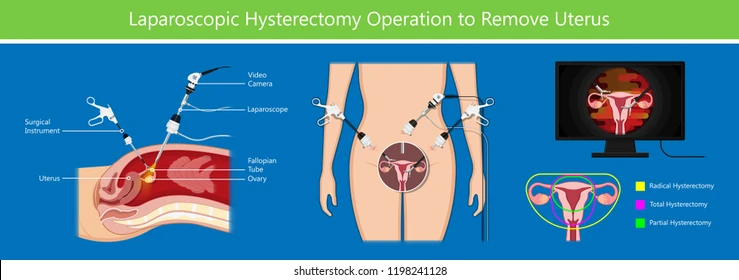Hysterectomy

A hysterectomy is a surgical procedure in which the uterus (womb) is removed.
Hysterectomy is typically recommended to treat a variety of conditions that affect the uterus, such as:
- Uterine fibroids: benign growths in the uterus that can cause heavy bleeding, pain, and pressure on the bladder or rectum.
- Endometriosis: a condition in which the lining of the uterus grows outside of the uterus, causing pain and heavy bleeding.
- Abnormal vaginal bleeding: heavy or irregular periods that can be caused by a variety of conditions such as uterine fibroids or endometrial cancer.
- Cancer of the uterus, cervix, or ovaries: a hysterectomy may be recommended as a treatment for early-stage cervical or endometrial cancer.
- Pelvic Prolapse: a condition in which the pelvic organs (uterus, bladder, rectum) fall into the vaginal area due to weakness in the pelvic floor muscles.
Hysterectomy may also be recommended as a last resort for other chronic conditions that have not responded to other treatments such as chronic pelvic pain, severe adhesions, or severe recurrent infection.
Here are several types of hysterectomy, including:
- Total hysterectomy: The uterus and cervix are removed.
- Supracervical or subtotal hysterectomy: The uterus is removed, but the cervix is left in place.
- Radical hysterectomy: The uterus, cervix, and a portion of the vagina, and sometimes lymph nodes and/or the fallopian tubes and ovaries are removed.
Hysterectomy is usually done as an inpatient procedure, and recovery time can vary depending on the type of procedure and the individual's overall health. Most women can return to their normal activities within a few weeks, but it can take a few months for the body to fully heal.
